Vladislav Belavin
Symbolic expression generation via Variational Auto-Encoder
Jan 15, 2023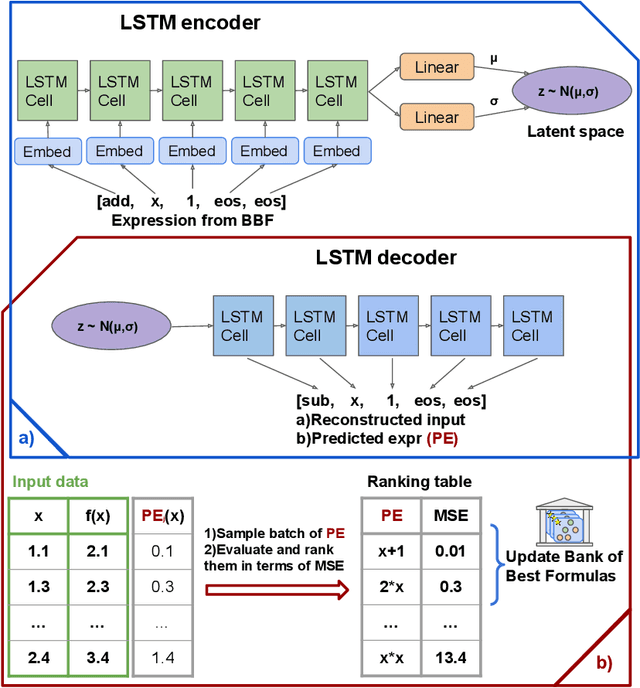
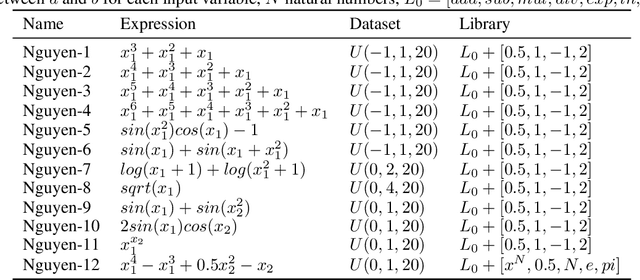
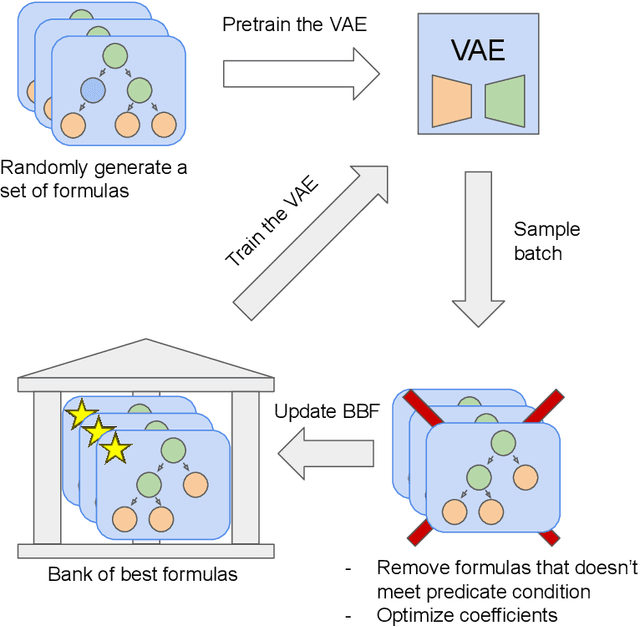

Abstract:There are many problems in physics, biology, and other natural sciences in which symbolic regression can provide valuable insights and discover new laws of nature. A widespread Deep Neural Networks do not provide interpretable solutions. Meanwhile, symbolic expressions give us a clear relation between observations and the target variable. However, at the moment, there is no dominant solution for the symbolic regression task, and we aim to reduce this gap with our algorithm. In this work, we propose a novel deep learning framework for symbolic expression generation via variational autoencoder (VAE). In a nutshell, we suggest using a VAE to generate mathematical expressions, and our training strategy forces generated formulas to fit a given dataset. Our framework allows encoding apriori knowledge of the formulas into fast-check predicates that speed up the optimization process. We compare our method to modern symbolic regression benchmarks and show that our method outperforms the competitors under noisy conditions. The recovery rate of SEGVAE is 65% on the Ngyuen dataset with a noise level of 10%, which is better than the previously reported SOTA by 20%. We demonstrate that this value depends on the dataset and can be even higher.
Segmentation of EM showers for neutrino experiments with deep graph neural networks
Apr 16, 2021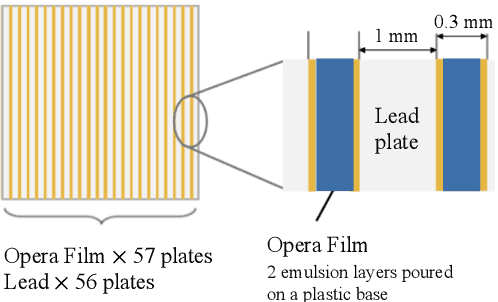
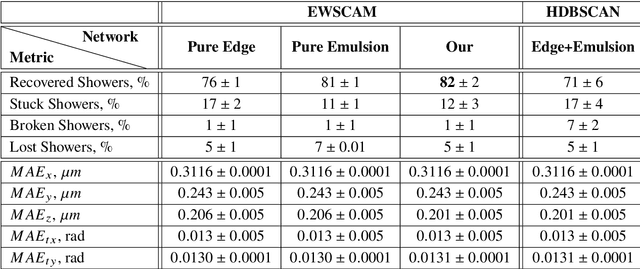
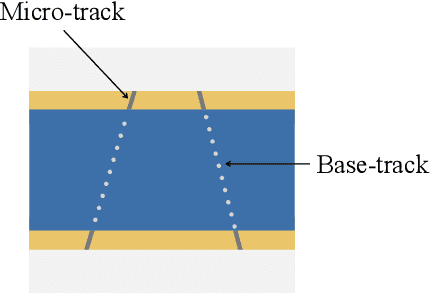
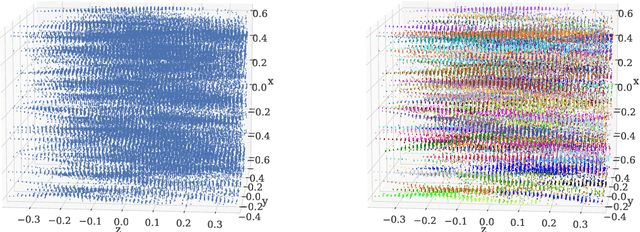
Abstract:We introduce a novel method for showers reconstruction from the data collected with electromagnetic (EM) sampling calorimeters. Such detectors are widely used in High Energy Physics to measure the energy and kinematics of in-going particles. In this work, we consider the case when a large number of particles pass through an Emulsion Cloud Chamber (ECC) brick, generating electromagnetic showers. This situation can be observed with long exposure times or large input particle flux. For example, SHiP experiment is planning to use emulsion detectors for dark matter search and neutrino physics investigation. The expected full flux of SHiP experiment is about $10^{20}$ particles over five years. Because of the high amount of in-going particles, we will observe a lot of overlapping showers. It makes EM showers reconstruction a challenging segmentation problem. Our reconstruction pipeline consists of a Graph Neural Network that predicts an adjacency matrix for the clustering algorithm. To improve Graph Neural Network's performance, we propose a new layer type (EmulsionConv) that takes into account geometrical properties of shower development in ECC brick. For the clustering of overlapping showers, we use a modified hierarchical density-based clustering algorithm. Our method does not use any prior information about the incoming particles and identifies up to 82% of electromagnetic showers in emulsion detectors. The mean energy resolution over $17,715$ showers is 27%. The main test bench for the algorithm for reconstructing electromagnetic showers is going to be SND@LHC.
Online detection of failures generated by storage simulator
Jan 18, 2021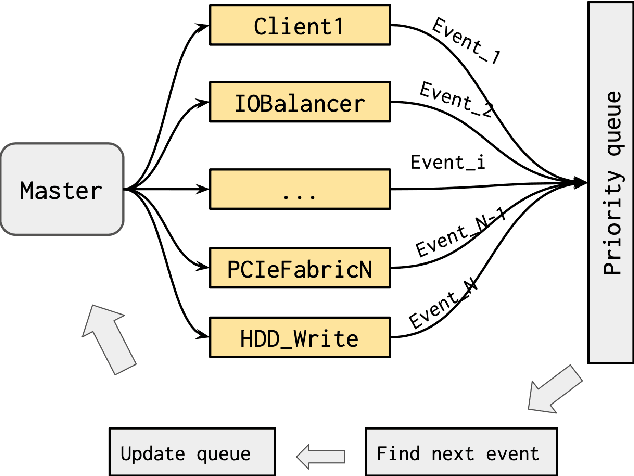

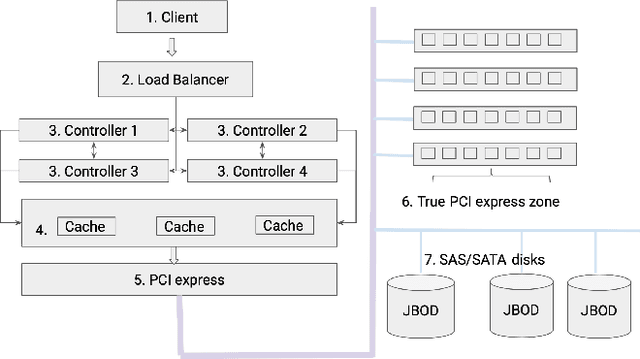
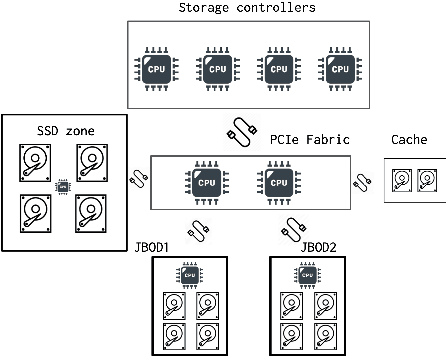
Abstract:Modern large-scale data-farms consist of hundreds of thousands of storage devices that span distributed infrastructure. Devices used in modern data centers (such as controllers, links, SSD- and HDD-disks) can fail due to hardware as well as software problems. Such failures or anomalies can be detected by monitoring the activity of components using machine learning techniques. In order to use these techniques, researchers need plenty of historical data of devices in normal and failure mode for training algorithms. In this work, we challenge two problems: 1) lack of storage data in the methods above by creating a simulator and 2) applying existing online algorithms that can faster detect a failure occurred in one of the components. We created a Go-based (golang) package for simulating the behavior of modern storage infrastructure. The software is based on the discrete-event modeling paradigm and captures the structure and dynamics of high-level storage system building blocks. The package's flexible structure allows us to create a model of a real-world storage system with a configurable number of components. The primary area of interest is exploring the storage machine's behavior under stress testing or exploitation in the medium- or long-term for observing failures of its components. To discover failures in the time series distribution generated by the simulator, we modified a change point detection algorithm that works in online mode. The goal of the change-point detection is to discover differences in time series distribution. This work describes an approach for failure detection in time series data based on direct density ratio estimation via binary classifiers.
Differentiating the Black-Box: Optimization with Local Generative Surrogates
Feb 11, 2020
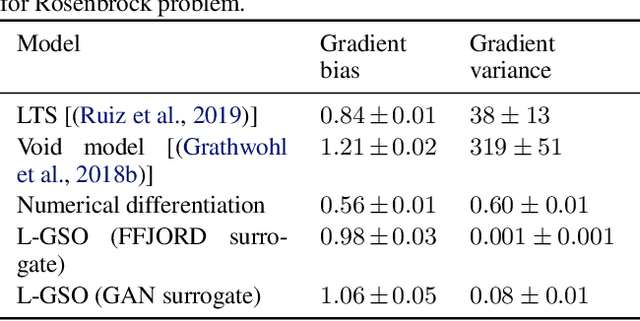
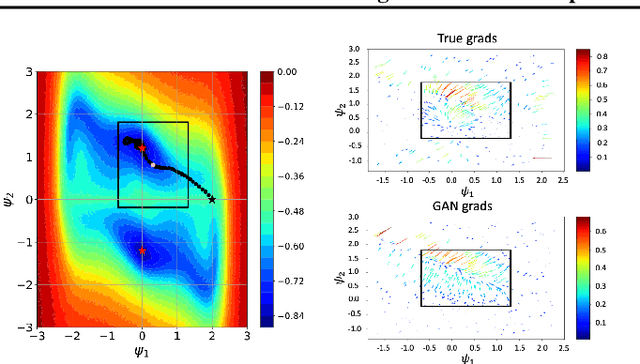

Abstract:We propose a novel method for gradient-based optimization of black-box simulators using differentiable local surrogate models. In fields such as physics and engineering, many processes are modeled with non-differentiable simulators with intractable likelihoods. Optimization of these forward models is particularly challenging, especially when the simulator is stochastic. To address such cases, we introduce the use of deep generative models to iteratively approximate the simulator in local neighborhoods of the parameter space. We demonstrate that these local surrogates can be used to approximate the gradient of the simulator, and thus enable gradient-based optimization of simulator parameters. In cases where the dependence of the simulator on the parameter space is constrained to a low dimensional submanifold, we observe that our method attains minima faster than all baseline methods, including Bayesian optimization, numerical optimization, and REINFORCE driven approaches.
 Add to Chrome
Add to Chrome Add to Firefox
Add to Firefox Add to Edge
Add to Edge